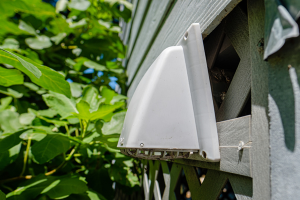
19 May, 2020
The U.S. Fire Administration reports that 2,900 dryer fires occur each year, causing an estimated $35 million in property damages, 5 deaths, and 100 injuries. It also reports that 34% of these fires are due to a failure to clean the dryer. These figures indicate how lint buildup and improper installation of your dryer vent systems can create a serious hazard.
Most people don’t even know their dryer vents need to be cleaned. They clean out their dryer vent filter now and then, and think that’s all that's needed. But the standard dryer vent duct is where lint can really accumulate and get clogged. This lint is highly flammable and is responsible for dryer vent fires.
A standard dryer vent comes in the following main types:
Dryer models differ, but they all work in basically the same way. When you switch on the dryer, its drum starts spinning while a blower circulates air past the heating element and into the drum. The air then departs through the filter into the exhaust port at the bottom of the dryer. From there, it goes into the vent and eventually flows through the vent opening in the side of your home.
If the filter wasn't present, the lint would quickly accumulate in the vents and block them. Thus, the lint filter plays a critical role. However, a filter doesn't catch everything, and some amount of lint still finds its way into the vent. The filter fills up fairly quickly, and after you dry a full load, it is quite common to find an inch or so of accumulation.
If you don't get rid of this accumulation, it restricts the flow of air through the dryer, and warm, moist air builds up in the tumbler. Clothes take longer to dry, and the temperature can get high enough to set the lint on fire. Nobody wants that, so dryer filter cleaning after every use is essential.
Here are four important standard dryer vent safety precautions to reduce risk.
Cleaning dryer vents effectively requires knowledge and the right tools. A professional dryer vent specialist will inspect the system to determine the severity of the lint build up. Using high-pressure air and vacuum, your local dryer vent cleaners will clean the entire length of your dryer duct.
Keeping your dryer vents clean can reduce the amount of lint buildup in the cabinet that can lead to fires. Once cleaned, be sure to clean your dryer filter after every load is dried. Dryer vent cleaning before and after will show you a noticeable difference in performance. Your clothes will dry quicker and your dryer vent will stay cleaner for long.
Save yourself headaches and unnecessary dryer vent repair costs down the road. Have your vents professionally cleaned by our Fargo HVAC experts. Call us at 701-293-5701 or use our online contact form today!